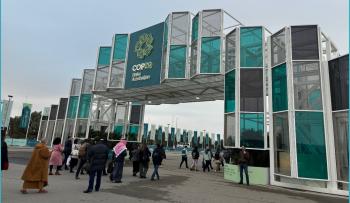
The barrier effect for cyclists: Quantifying the negative impact of large transport infrastructure
Large transport infrastructure, from highways to railways, often creates barriers for non-motorised modes of transport, particularly cyclists. This phenomenon, known as the "barrier effect," can lead to longer travel times and safety concerns. Julien Cazaux, a master’s student at the Norwegian University of Science and Technology, quantified these negative effects in his thesis. Inspired by ECF’s infrastructure tracker and focusing on TEN-T infrastructure, Cazaux developed a data-driven methodology using OpenStreetMap to assess how these barriers fragment land and impact cycling accessibility.
What barriers exist?
TEN-T infrastructure, particularly motorways, railways and inland waterways, causes land fragmentation. Without specific facilities – bridges, tunnels, safe level crossings – it is often impossible for cyclists to cross these barriers, complicating both daily commutes and long-distance travel.
A data-driven approach
Inspired by the success of ECF’s cycling infrastructure tracker, this analysis uses OpenStreetMap data to quantify and evaluate the barrier effect for cycling. The aim is to create a transparent and scalable methodology that can be applied across different regions with different types of infrastructure and data sourcing.
The process
The methodology first inventories the infrastructure network that may create barriers and analyses its spatial distribution. It is important to be aware of the extent of the barrier’s network. The network is then overlaid with the cycling network, allowing barriers to be identified at intersections.
This can be exemplified with the Luxembourg Railway Network. The graphic on the left shows the Luxembourg Railway Network and on the right crossing points for cyclists.
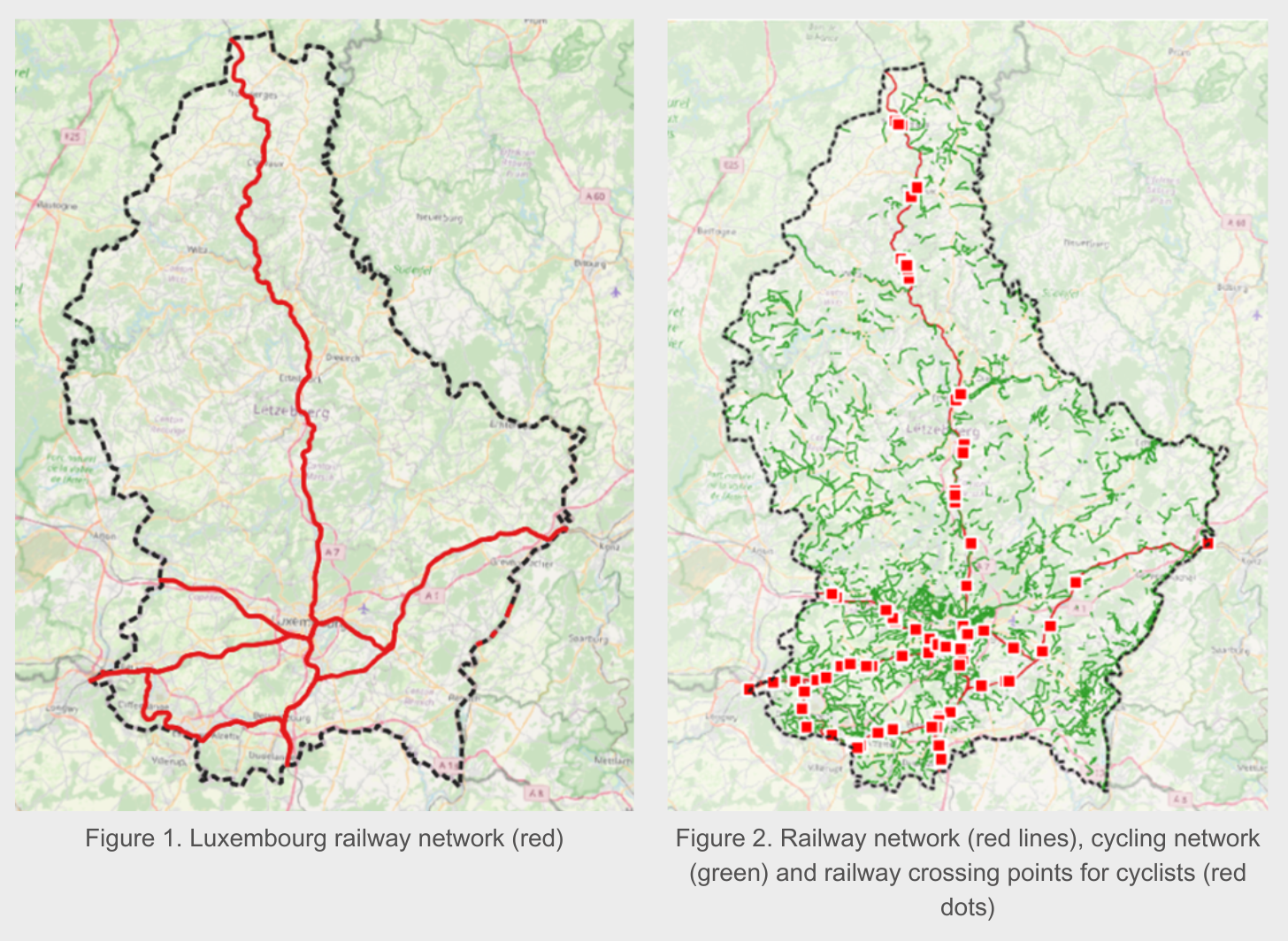
The model then estimates the detour caused by the barrier and uses it as a basis to determine its negative impact on factors such as travel times. By incorporating other parameters, such as the population density grid, the method assesses the actual influence on both current and potential cyclists.
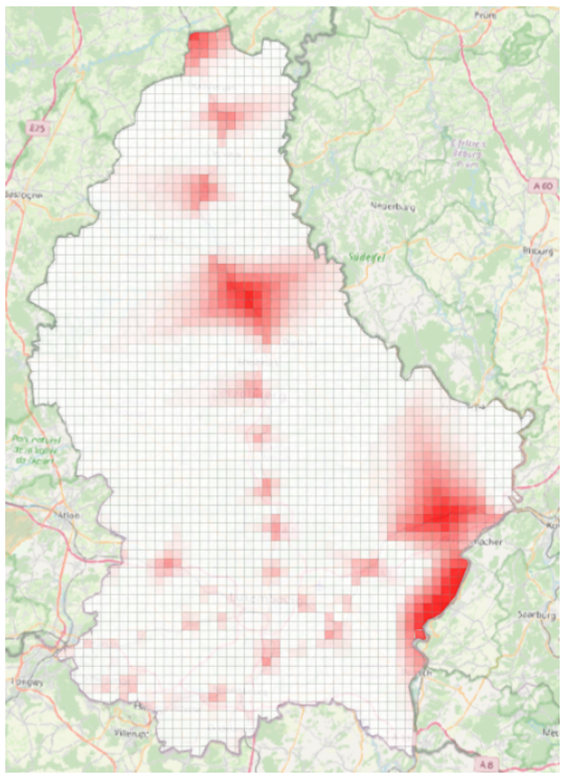
Impact assessment
Finally, this tool scans the entire surrounding area and provides a spatial visualisation of the barrier's impact, highlighting intersections that require more investment to improve safe crossings for cyclists.
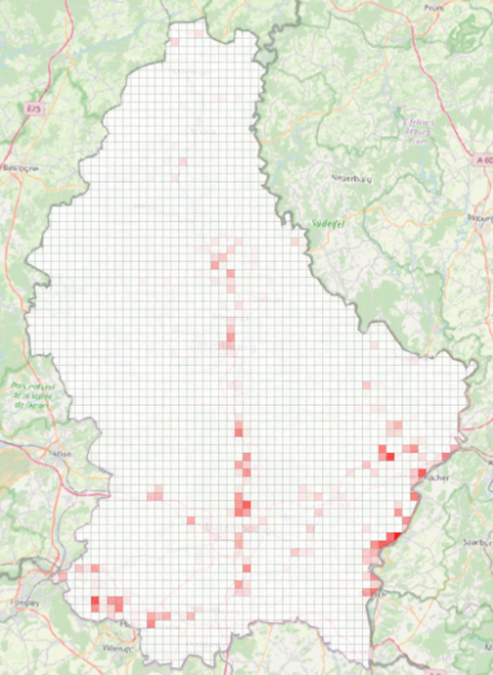
![]()
Following the local study, the barrier effect for the entire region can be estimated, enabling comparisons with other regions. Using a grading system, this data offers a large-scale overview of geographical trends.
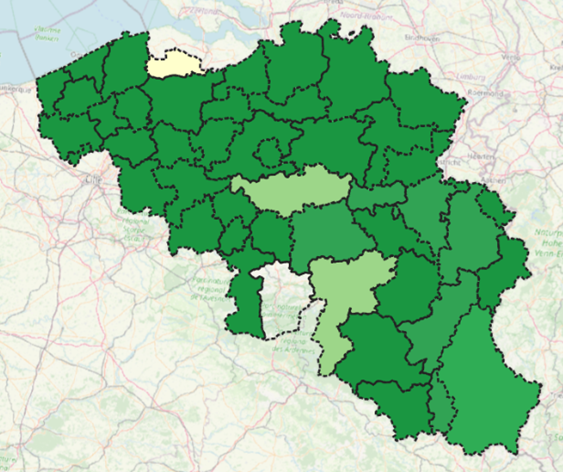

Not only railways
The methodology can be applied beyond railways to waterways and motorways. It could potentially also be used to assess other types of barriers, such as administrative borders (national or regional) or natural (mountain ranges, cliffs), although these applications have yet to be tested.
The methodology provides a systematic approach to collecting data on cycling and motorised infrastructure and identifying their interactions and potential barriers. Comparing different areas and pinpointing critical locations that need improvement is valuable information for infrastructure planners and policymakers, offering insights into where cycling needs should be better integrated into long-distance transport planning.
Further reading
Julien Cazaux, a student at the Norwegian University of Science and Technology, researched this work. For more detailed insights, reflections, and potential future applications, you can consult Julien's master's thesis, which is available here.
Topics:
Contact the author
Recent news!
Upcoming events
Contact Us
Avenue des Arts, 7-8
Postal address: Rue de la Charité, 22
1210 Brussels, Belgium



